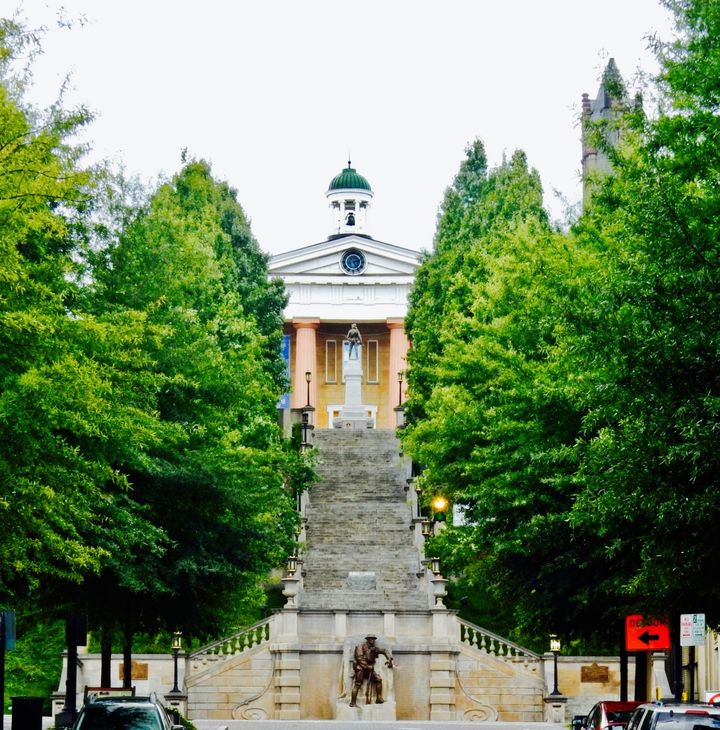
Monument Terrace, Lynchburg VA
Small Mid- Virginia towns, like Lynchburg and Staunton are often overlooked in the public’s penchant for cities that rim Washington DC, the Capital city of Richmond, or even the coastal Hampton Roads Region. But that’s a mistake, as small landlocked Virginia towns, particularly once wealthy ones like Lynchburg and Staunton, were fertile ground for city planners, architects, and a populace eager for the best buildings and entertainment the world could offer. In Lynchburg, a Victorian-age Women’s College became a prime collector of important Modern Art, and Pierce St. was a hotbed for African-American progressives – both in the early 1900’s. And, besides being the hometown of Woodrow Wilson, Staunton is now the unlikely location for the American Shakespeare Center, with the world’s only recreation of Shakespeare’s indoor theater, Blackfriars, an elaborately designed downtown, and a Living History Museum featuring actual European homesteads from the 17th and 18th centuries. A visit to both towns necessitates a stunning drive up and over the Blue Ridge Mountain range, with a stop at one of the most poignant Military Memorials in the county. For more on each destination, and other “Best Offbeat Escapes in the Northeast” - check out the GetawayMavens.com.
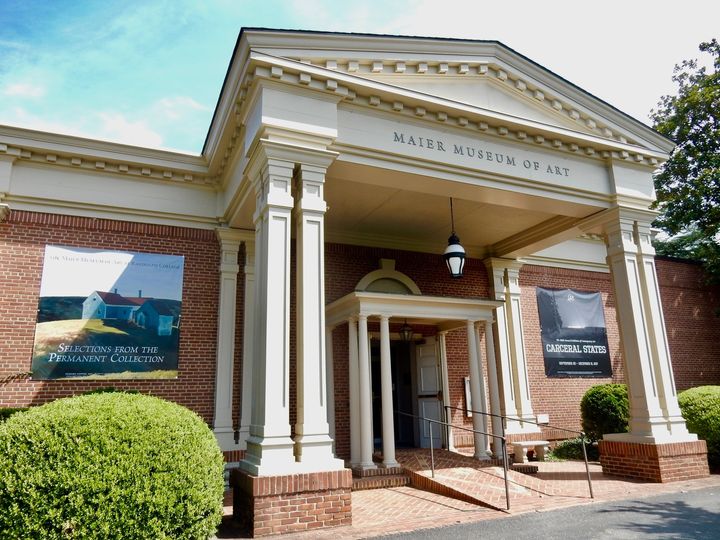
Maier Museum of Art, Randolph College, Lynchburg VA
1. The Maier Museum of Art on the campus of Randolph College was originally built in 1951 as a repository for the National Gallery in Washington DC, in the event of an atomic bomb. Three and a half hours from “the blast zone,” officials believed that Lynchburg was far-flung enough to save the priceless paintings in our Nation’s major art museum. Why Randolph College? Surprisingly, this rather remote institution had maintained a deep-seated affection for modern art for decades. Established in 1891, the Randolph-Macon Women’s College (which went co-ed in 2007) began mounting yearly exhibits, thanks to Art Professor and early modern art champion, Louise Jordan Smith, who realized that though she couldn’t take students to New York, she could bring current collections to this small Virginia town. Since 1911, the college has purchased one work of art each year for its permanent collection, which was scattered among buildings on campus until 1983, when the National Gallery released the museum building’s commitment as repository. Now, all of the collected art is displayed, on a rotating basis, in four bright galleries for all the world to see.

Iron Head, gift from W.E.B. DuBois, Anne Spencer Gardens, Lynchburg VA
2. In 1903, 21 year old Anne Spencer, a beautiful Harlem Renaissance poet, moved to now Historic Pierce Street (also home to Dr. Robert Walter “Whirlwind” Johnson, the tennis coach who trained Althea Gibson, Arthur Ashe, and other promising Black players in his backyard court) with her devoted husband, Edward, and two young children. Edward, a self-taught architect, builder, and visionary artist, used found objects and saturated colors to design the wildly beautiful Anne Spencer Home and Gardens, open for tours. The Spencer’s attracted the leading African-American minds of the day: Adam Clayton Powell spent his honeymoon night here, and Langston Hughes, Martin Luther King, Jr., and NAACP co-founder W.E.B Dubois were frequent visitors.

Legacy Museum, Lynchburg VA
3. The Legacy Museum of African American History and Art, showcasing the best of African-American art and important regional history, such as Life During Jim Crow, and African Americans in the Military, is housed in a lovely Victorian “Painted Lady” home.
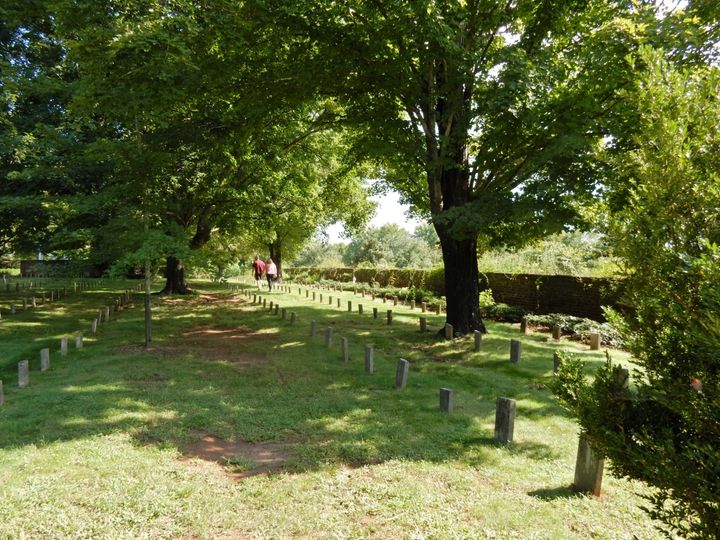
Confederate graves, Old City Cemetery, Lynchburg VA
4. The 1806 Old City Cemetery is as quirky-fun for the living as it’s a resting place for the 20,000 deceased (including 2,200 Confederate soldiers). Couples book weddings at the on-site chapel, visitors can take the “Bawdy Ladies Tour” (apparently, there are quite a few brothel owners and workers buried here), you can pick up some cemetery-made honey at the gift shop, smell the antique roses, stop into several bite-size museums, and drive around to find random architectural artifacts from demolished city buildings. Weird, wonderful and quiet – and not a peep from the residents.
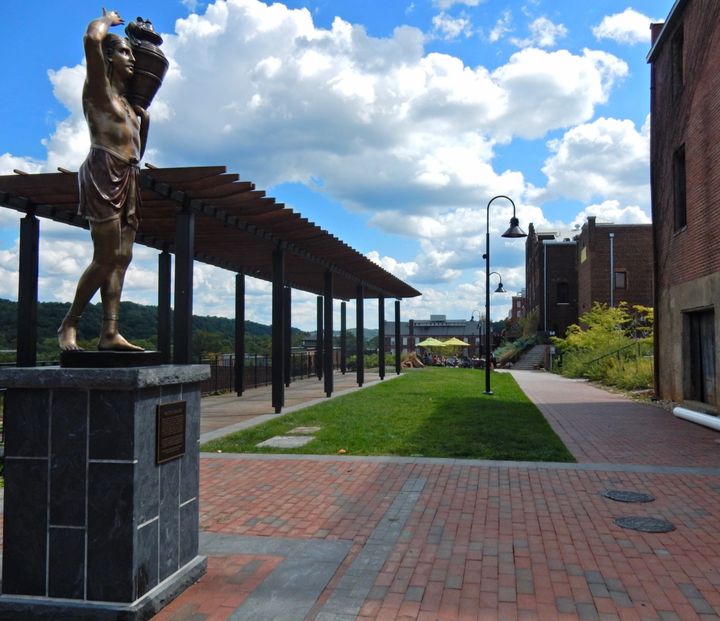
Bluff Walk, Lynchburg VA
5. Lynchburg may be landlocked, but it’s got the James River, which was crucial, in the mid 1700’s, for shipping tobacco all over the world. Once the second wealthiest town in the nation (New Bedford MA– whaling – was #1), even in the mid-1800’s when the railroad replaced the river, and shoes replaced tobacco as the town’s primary industry, Lynchburg townspeople were thirsty for world-class culture. Lynchburg parades were legendary: Annie Oakley, Buffalo Bill Cody, and Circus acts came through regularly. Opera houses, theaters, and department stores were erected. Houdini, John Philip Sousa, and a young actor named Ronald Regan preformed here. The best way to learn about Lynchburg History is through a marvelous walking tour that begins in the Visitor’s Center, and hits the highlights of Downtown Lynchburg, including the ¼ mile Bluff Walk – a mixed-use promenade that offers views of the river, and Monument Terrace - a 139 step staircase with monuments to locals who have fallen in U.S. – involved wars.
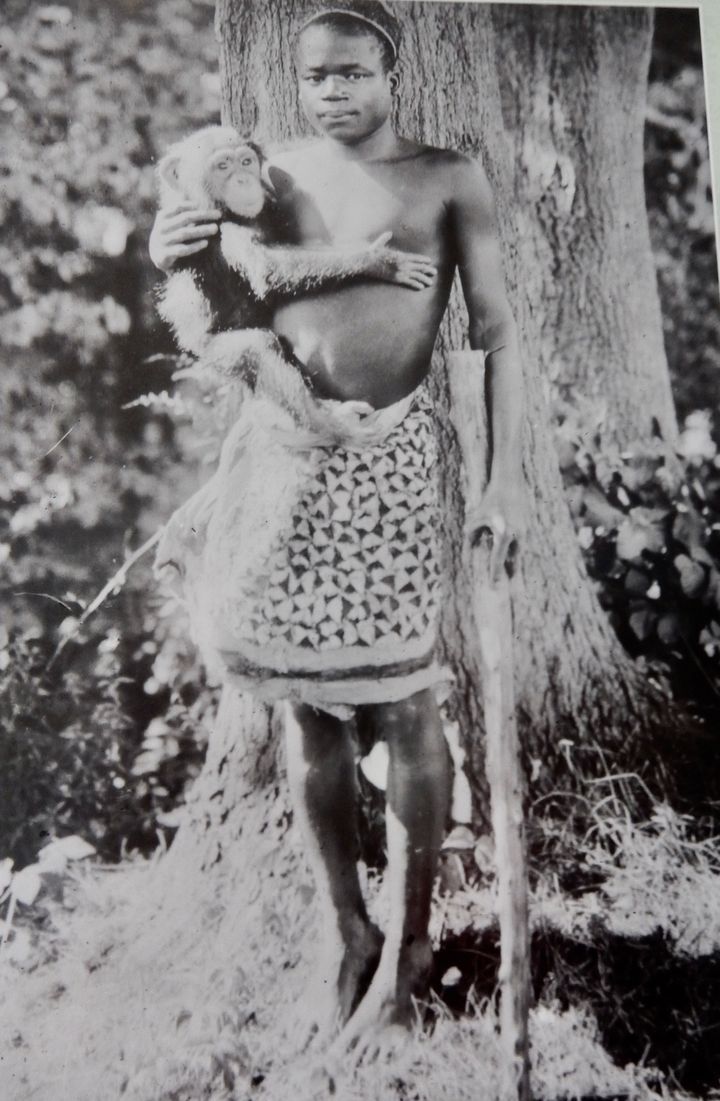
Ota Benga, Lynchburg Museum VA
6. Desmond Doss, the pacifist-medic whose story was told in the blockbuster movie, Hacksaw Ridge, was from Lynchburg. Ota Benga, a Congolese Pigmy put on display for a few weeks in the Ape House at the Bronx Zoo in the early 1900’s before being rescued by faculty at the nearby Virginia Seminary, was friends with Anne Spencer and her son, Chauncey, and lived in Lynchburg. The fantastic Lynchburg Museum, opened in 2008 inside the 1855 Lynchburg Courthouse at the tippy top of Monument Terrace, elaborates on these stories and much more.
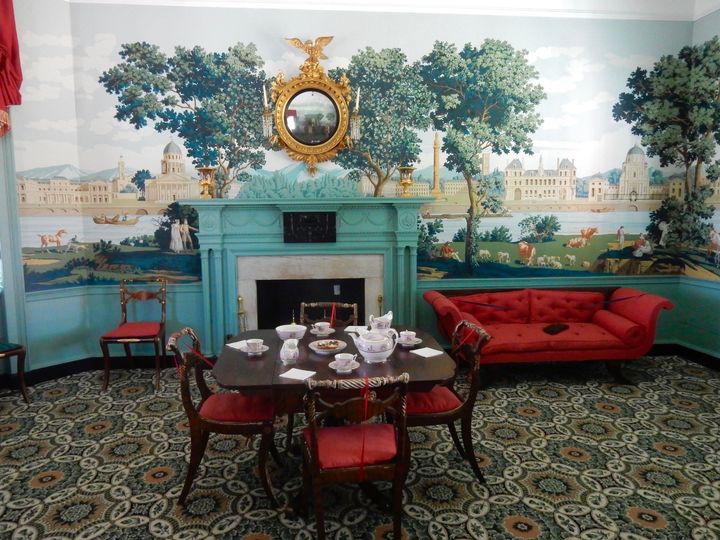
“Monuments of Paris” Mural in parlor of Point of Honor Mansion, Lynchburg VA
7. The parlor in the Point of Honor Mansion - home of Dr. George Cabell, physician to Patrick Henry, who also owned a fleet of bateau riverboats that he rented to tobacco farmers - is the most extravagantly decorated room in the home. With its reproduction of a popular wallpaper mural of the day - the panoramic, non-repeating “Monuments of Paris,” encasing the whole room inside the City of Light - this feature alone should compel all interested in Federal-decor to make a beeline here.
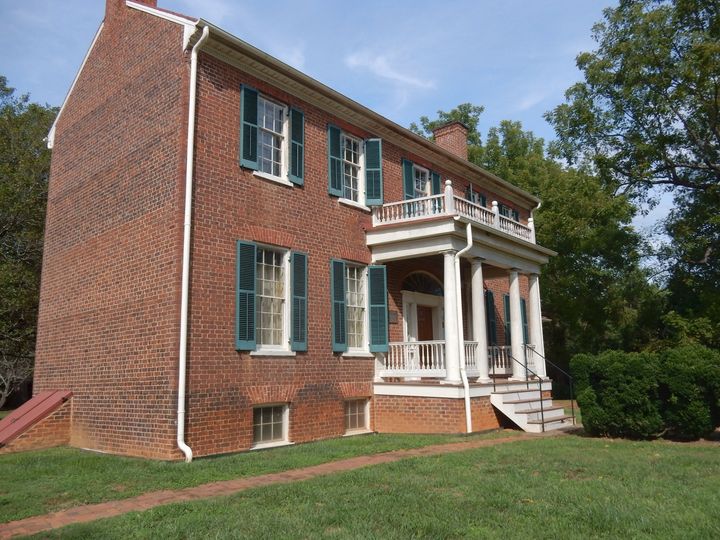
Exterior, Historic Sandusky, Lynchburg VA
8. Historic Sandusky tells the tale of how a private home was commandeered, used, and then abused by military officers during the Civil War. Union General David Hunter, a “radical Abolitionist with a temper,” was ordered to take Lynchburg “in the foothills of the Blue Ridge Mountains” as Lynchburg was then a flourishing trade center. To stage his battle, Hunter seized this 1808 Federal style home as Union Army headquarters, locking its occupants – the Hutter’s – in their bedroom. Discover what happened next on a tour of the home and properly.
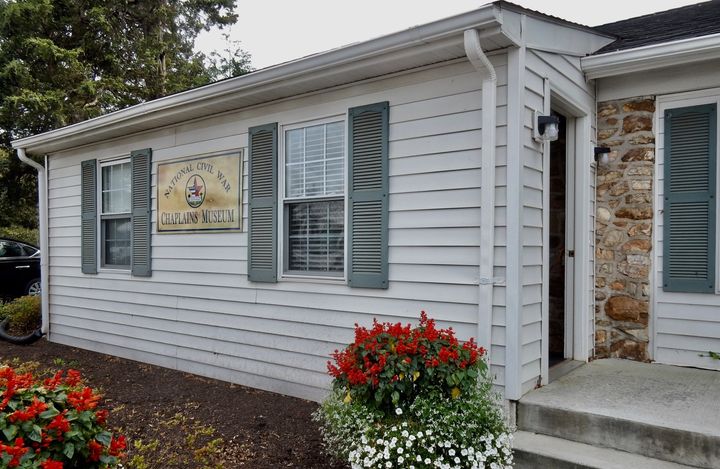
National Civil War Chaplains Museum, Lynchburg VA
9. The National Civil War Chaplains Museum is as niche a museum as you’ll ever find, and, given its religious content, appropriately located on the grounds of Jerry Falwell’s Liberty University. In fact, Falwell’s grave is just steps from the tiny museum’s front door. The NCWCM emphasizes the important role that 3,462 commissioned Civil War chaplains played: offering comfort, council, and basic necessities to the frightened and injured.
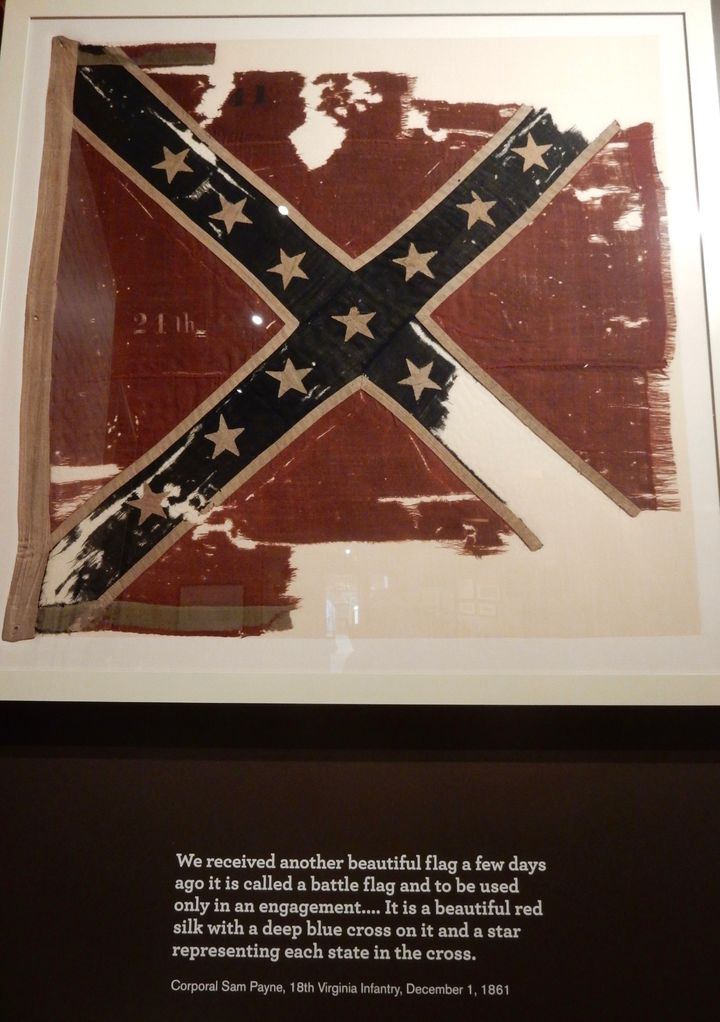
Confederate Battle Flag American Museum of Civil War, Appomattox VA
10. Until two years ago, the American Civil War Museum in Appomattox (30 minutes from Lynchburg) was the Museum of the Confederacy. With a renewed, more balanced message, the ACWM showcases what was going on in hearts and minds on both sides of the conflict through a succession of banners, diaries, and newspaper clippings. On display are multiple tattered Confederate flags, flown, in no uncertain terms, as “Battle Flags,” and articles and commentary from editors the Sunday after Lee surrendered to Grant on April 9th, 1865. Tom Nast, in a Harper’s Weekly article, labeled Grant the “Peace Maker in Chief,” and went on, “Lee, surrendering to Grant, is barbarous feudalism yielding to Christian Civilization.”
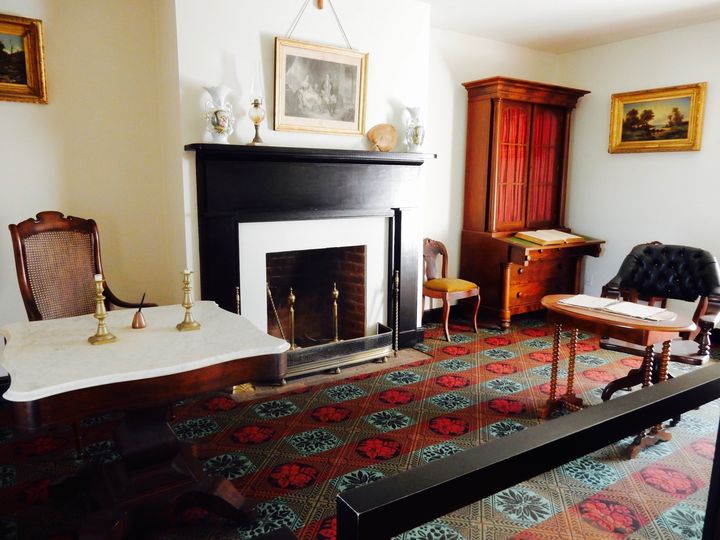
Where Lee Surrendered to Grant, Appomattox National Park VA
11. You can spend a half day at Appomattox Court House National Park, but if short on time, make sure to visit two buildings: the McLean House, a replica of the place where on April 9th, 1865, Confederate General, Robert E. Lee surrendered to Union General Ulysses S. Grant; and the Clover Hill Tavern, the village’s only tavern/hotel at the time, where “paroles” were printed so 28,000 pardoned Confederate Troops could travel home safely.
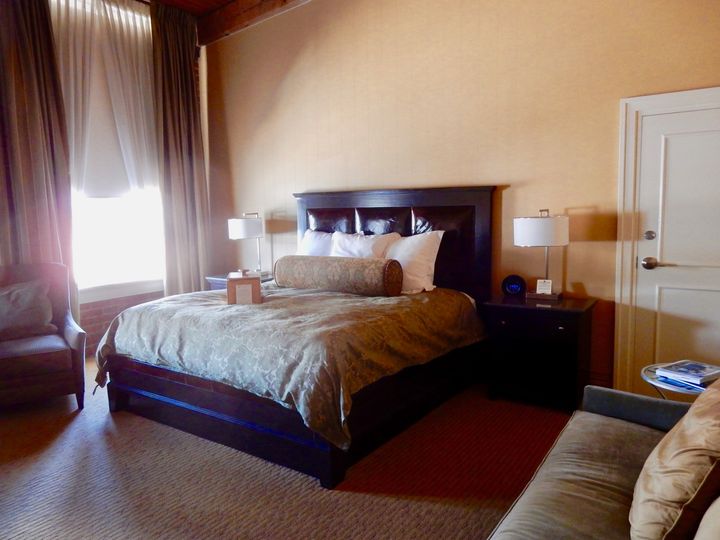
Guest Room Craddock Terry Hotel, Lynchburg VA
12. Boutique hotel loving trendsetters have discovered the Craddock Terry Hotel, in a repurposed old shoe factory. You can’t miss this place – it’s the stately brick building on Bluff Walk with a massive red shoe over the front door. Luxe rooms are handsomely dressed in shades of moss, ecru, and exposed brick. Pillow top beds are the stuff of memories – so sinkably, sinfully restful, they are often the first thing that guest gush about here.
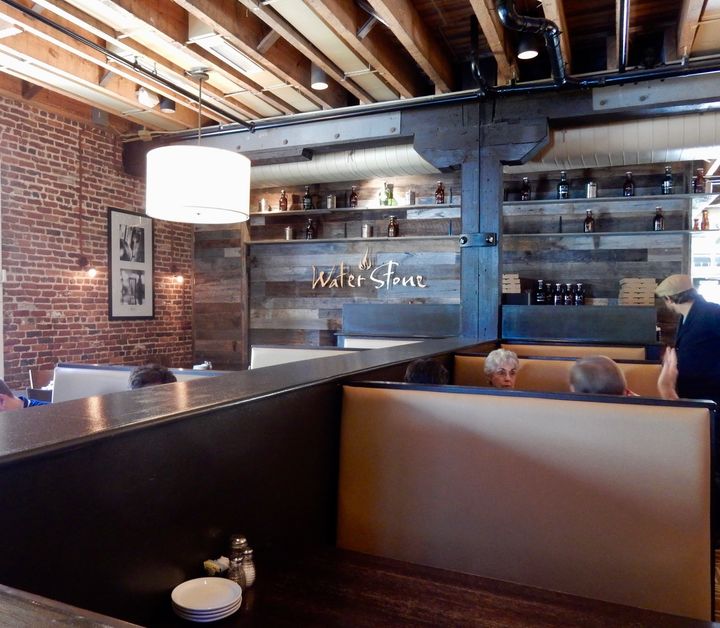
Waterstone Pizza, Lynchburg VA
13. Lynchburg locals have clear favorites when it comes to restaurants: the sophisticated, locally sourced Isabella’s Trattoria, in the Boonsboro section of Lynchburg, for fine Italian dining, Waterstone Fire Roasted Pizza in the Craddock Terry Hotel for best charred-crust pies, and Fifth & Federal Station for down-home BBQ in an old gas station.
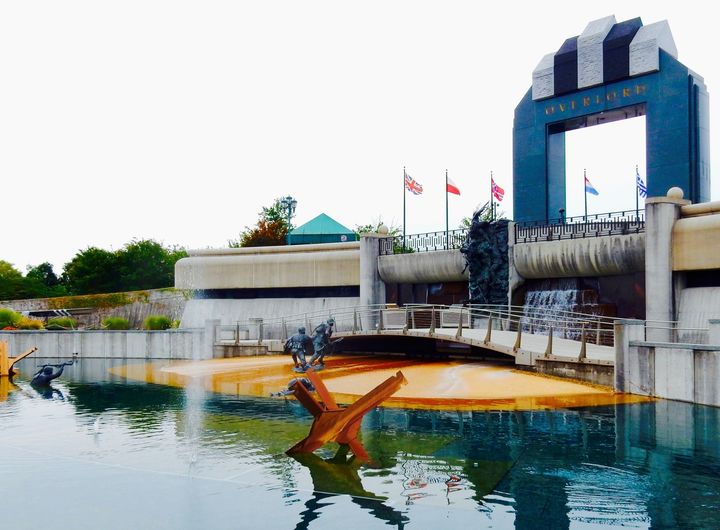
D-Day Memorial, Bedford VA
14. Stop at the D-Day Memorial in Bedford VA, 40 minutes from Lynchburg on the way to Staunton (a 2 hour drive north in total from the east side of the Blue Ridge Mountains to the west side). This moving memorial to the Allied forces that participated in the invasion of Normandy on D-Day, June 6, 1944 - the “largest amphibious landing the world had ever seen - is a very worthy and dramatic stop. Monuments and figures of men soldiering through enemy fire are positioned around a large circular plaza. At its center is a basin of water, men emerging from an LST (Landing Ship, Tank) carved in granite, as waterspouts, like shots, fly up around them. It’s powerfully evocative, as are the lifelike sculptures of the soldiers emerging from the fray.

Blackfriars Playhouse Staunton VA
15. You’ll learn about how show directors dealt with - and still handle – the buckets of blood required for a typical Shakespearian tragedy on a fantastic Backstage Tour of the Blackfriars Theater – home of the American Shakespeare Center. Severed heads and other props, fabricated specifically for each of the Bard’s plays, are stowed in a small room beneath the staircase behind the stage. You’ll hear the back-story of this professional theater, walk on and behind the stage, and learn how Blackfriars still honors patrons and its heritage. This tour is surely one of the highlights of a visit here.

Irish Forger, Frontier Culture Museum Staunton VA
16. The Frontier Culture Museum, with its knowledgeable costumed interpreters, is uniquely compelling. Each circa 1600’s to 1700’s pedigreed farmhouse – brought here from England, Ireland, and Germany, reconstructed exactly as in their respective European villages – illuminates the forces in the Old Country driving immigration here. Also on site is a West African Farm - what the Igbo Tribe from Nigeria had to leave behind in the 1740’s when captured to be enslaved here; and a Native American compound – built by the indigenous people newcomers would have encountered when first setting foot on this soil. Spend half a day learning about the origins of all aspects of our country.

Woodrow Wilson Library and Museum Staunton VA
17. Born here on December 28th, 1856, President Woodrow Wilson would make his very last visit to his home on his 56th birthday, a few days before his inauguration. Despite his disabilities and illness, Wilson presided over our nation during the first World War, and the Spanish Flu epidemic of 1918, established the Federal Reserve and Federal Trade Commission, and was in office for the passage of the 19th Amendment - the Women’s Rights Act of 1920 – acquiescing only “after some arm-twisting from his wife.” His home is now restored to how it looked in the 1930’s and is augmented by a well-established Woodrow Wilson Museum and Library.
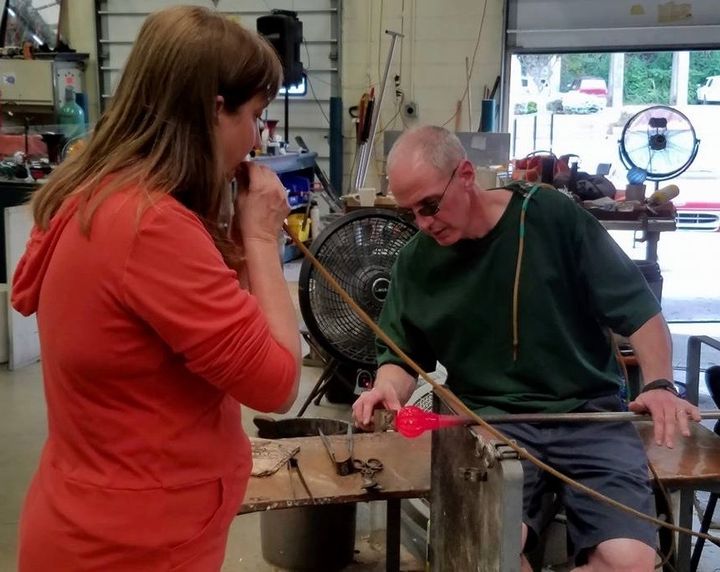
Glassmaking at Sunspot Studio Staunton VA
18. Make your own glass ornament at Sunspot Glassblowers. Ever yearn to jump off the viewing stand and help a professional glassblower with his craft? Though your role in the activity is small (choose from an assortment of vibrant colors and then blow air into a rubber tube to inflate a teardrop of molten glass while the artisan shapes it), it enables you to hang out where the action is, by the fiery furnaces, as molten glass is heated. Take “your” creation home the next day after it’s had time to cool.

Beverly St Staunton VA
19. The buildings lining Staunton’s downtown streets represent some of the best architectural designs in the world. Once on the edge of the American frontier in the foothills of the Blue Ridge Mountains, Staunton was the last stop on the railroad line and “a rockin’ place” post Civil War. By the late 1800’s it was the perfect canvas for architect TJ Collins who had a fondness for Classical Pattern Books from Europe. Collins designed over 200 buildings – no two alike – in a spectrum of styles from Greek to Roman, Moorish, Gothic, Renaissance, Victorian and more that gussy up Staunton’s commercial boulevards. Though boutiques, galleries, antique emporiums, and celebrated restaurants are attracting a growing number of visitors, a stroll down Beverly Street and its offshoots, even if you don’t shop or eat, is a feast for the eyes.
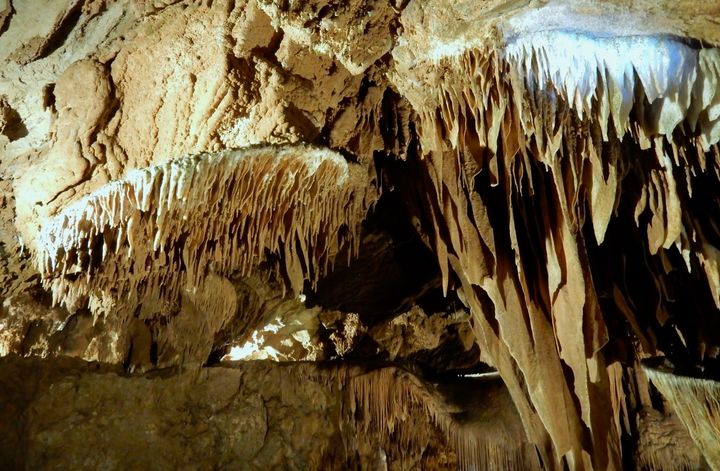
Shield Formations Grand Caverns Grottoes VA
20. Grand Caverns, in Grottoes VA (about 20 minutes from Staunton), owned by the Town of Grottoes, features over 200 rare “shield formations” – cave formations that extend outward - and still a mystery to scientists. As most cave systems in the country have zero or one at most, Grand Caverns draws a good number of visitors to see these round discs in formation-rich underground chambers – a real thrill.
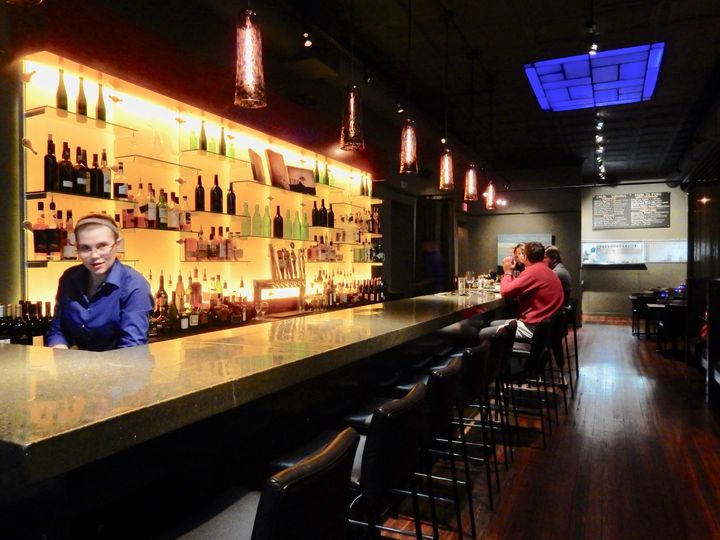
Zynodoa Restaurant Staunton VA
21. Zynodoa, an innovative Southern-American restaurant, on the top of most local Fine Dining lists, wouldn’t look out of place in, say, Manhattan, with its dramatic backlit bar and dark grey walls peppered with vividly colored art. But Zynodoa has earned its upscale cornpone cred by virtue of its location in small-town Virginia. So, of course, there’s Cast Iron Cornbread; but this iteration a caramelized disc of sweet cake glazed with a crunchy film of sugar - in a nutshell, a Bluegrass Crème Brûlée. Locally sourced Southern Fried Catfish and Polyface Farm Molasses Brined Chicken and Dumplings prove that the chef has skillful ways with even the most comfortable of comfort food ingredients.
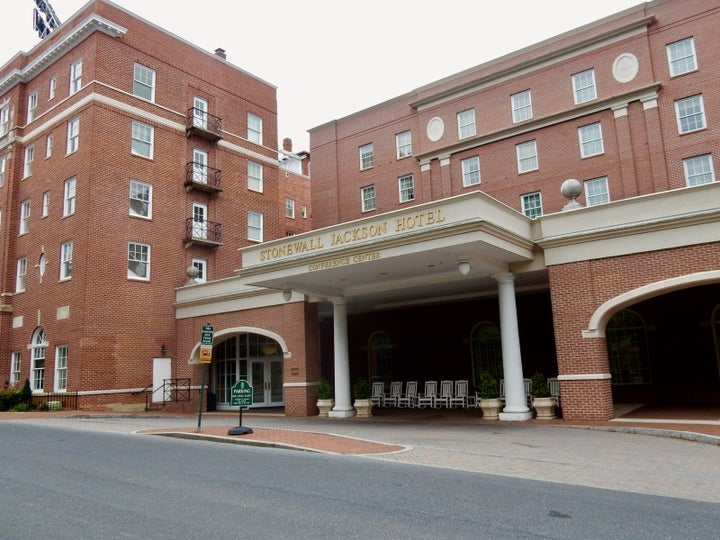
Stonewall Jackson Hotel Staunton VA
22. The Stonewall Jackson Hotel, right in downtown Staunton, is best positioned for visitors who want to visit the Woodrow Wilson Home and Library (about a block away), tour or see a Shakespeare play at Blackriars next door, and walk downhill to shop and take in the magnificent architecture. The whole hotel, first built in 1924, was renovated in 2005, and though not “boutique-stylish,” rooms, which feature photographs of local architecture, are fine for discerning guests who want to stay where the action is. The adjacent garage charges just $6 a night. Not bad for an in-town hotel.
